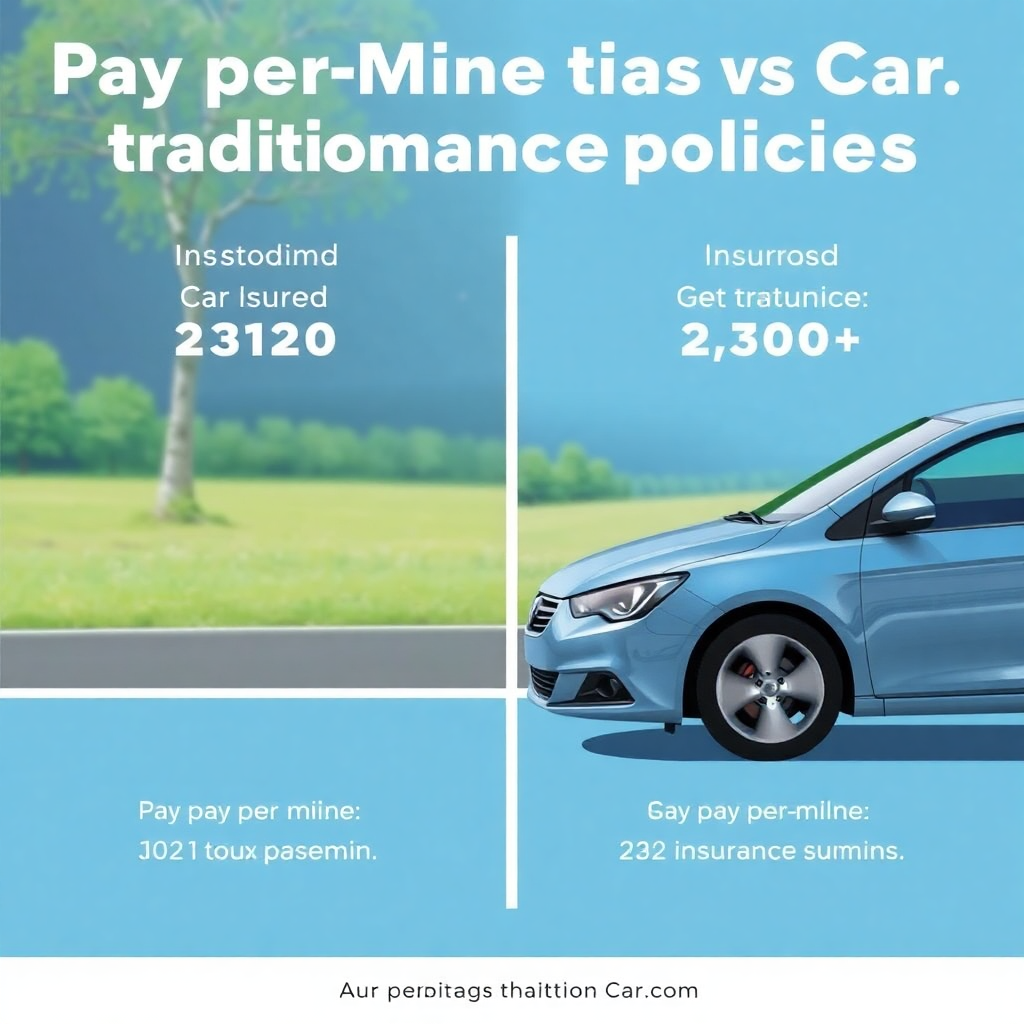In today’s evolving insurance landscape, pay-per-mile car insurance has emerged as an attractive alternative to traditional policies. While both options aim to provide financial protection for drivers, they cater to distinct needs and lifestyles. Understanding the differences, benefits, and potential drawbacks of each can help you make an informed decision about your car insurance.
What Is Pay-Per-Mile Car Insurance?
Pay-per-mile insurance, also known as usage-based insurance, calculates premiums based on how much you drive. It is ideal for those who drive infrequently or have short commutes. The total cost typically consists of two components:
- Base Rate: A fixed monthly fee based on factors such as age, driving history, and vehicle type.
- Per-Mile Rate: A variable charge that depends on the number of miles driven.
Drivers often use a mobile app or a tracking device installed in their vehicles to record mileage, ensuring accurate billing.
What Are Traditional Car Insurance Policies?
Traditional car insurance policies operate on a fixed-premium model. The insurer estimates the risk of insuring you based on various factors, including:
- Age and gender
- Driving record
- Vehicle make and model
- Location
Your premium remains constant regardless of how much you drive, making it a straightforward choice for those who prefer predictability.
Key Differences Between Pay-Per-Mile and Traditional Insurance
| Feature | Pay-Per-Mile Insurance | Traditional Insurance |
|---|---|---|
| Cost Structure | Based on mileage + base rate | Fixed premium |
| Best For | Low-mileage drivers | High-mileage or average drivers |
| Billing Method | Usage-based | Pre-determined |
| Tracking Required | Yes (via app or device) | No |
| Flexibility | More flexible for lifestyle changes | Consistent, regardless of driving habits |
Benefits of Pay-Per-Mile Car Insurance
- Cost Savings for Low-Mileage Drivers If you drive less than the national average (approximately 12,000 miles per year), pay-per-mile insurance can save you a significant amount of money.
- Encourages Eco-Friendly Habits By tying costs to mileage, this model incentivizes drivers to reduce unnecessary trips, potentially lowering their carbon footprint.
- Transparent Pricing With mileage-based billing, you pay for what you use, making it easier to understand where your money goes.
- Adjustable Coverage Some pay-per-mile plans allow adjustments to your base rate or per-mile cost as your driving patterns evolve.
Benefits of Traditional Car Insurance
- Stability and Predictability A fixed monthly premium provides peace of mind, as your insurance costs remain consistent regardless of how much you drive.
- No Tracking Devices Required Traditional policies do not require mileage tracking, making them less intrusive.
- Comprehensive Coverage Traditional insurance often includes broader coverage options and benefits, such as accident forgiveness and roadside assistance.
- Better for High-Mileage Drivers If you commute long distances or frequently take road trips, a traditional policy is likely more cost-effective.
Drawbacks of Pay-Per-Mile Insurance
- Mileage Tracking The need for a tracking device or app may feel invasive to some drivers.
- Not Ideal for Frequent Drivers High-mileage drivers may find pay-per-mile insurance more expensive than traditional options.
- Limited Availability Pay-per-mile insurance is not yet widely available in all states or through all insurers.
Drawbacks of Traditional Insurance
- Higher Costs for Low-Mileage Drivers Those who drive infrequently may end up paying more than they need to with a traditional policy.
- Less Flexibility Traditional insurance does not adjust premiums based on changes in driving habits.
- Generalized Risk Assessment Fixed premiums are based on broad risk factors, which may not accurately reflect individual driving behavior.
Which One Should You Choose?
The right insurance option depends on your driving habits, financial goals, and comfort with technology. Consider the following scenarios:
Opt for Pay-Per-Mile Insurance If:
- You drive less than 8,000–12,000 miles per year.
- You work remotely or use public transportation frequently.
- You want a cost-effective and usage-based solution.
Stick with Traditional Insurance If:
- You drive long distances regularly.
- You prefer a predictable monthly premium.
- You are uncomfortable with mileage tracking technology.
How to Transition Between Policies
- Evaluate Your Driving Habits Use a mileage tracker or app to understand your annual driving distance.
- Get Quotes from Multiple Providers Compare costs and features of both pay-per-mile and traditional policies.
- Read the Fine Print Ensure you understand coverage limits, exclusions, and additional fees for both types of policies.
- Monitor Your Costs After switching, periodically review your insurance expenses to ensure you’re getting the best value.
Final Thoughts
Both pay-per-mile and traditional car insurance policies have their unique strengths and drawbacks. While pay-per-mile insurance offers flexibility and potential savings for low-mileage drivers, traditional policies provide stability and comprehensive coverage for those with consistent driving needs. Assessing your driving habits and priorities can guide you toward the best choice for your lifestyle.
Take the time to explore your options and consult with insurance providers to find the perfect fit for your needs. By doing so, you can secure the right coverage while optimizing your expenses—whether you’re cruising down the highway or parking your car most of the week.






Leave a Reply